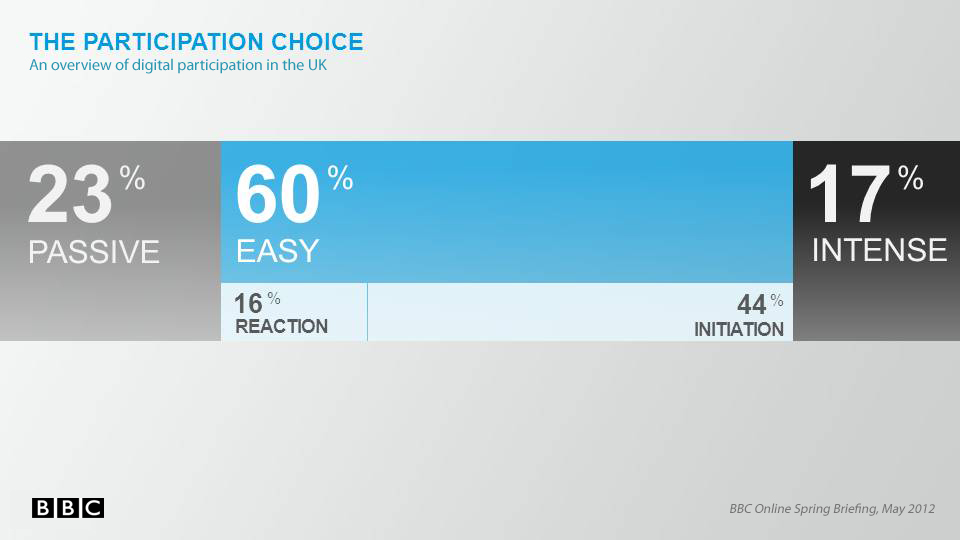Interesting piece on the BBC blog in 2012 (how did I miss it…) by Holly Goodier about their research on Social Engagement – essentially the old 1/9/90 (1% writers, 9% commentors, 90% readers) was partly a measure of the difficulty of access to the technology. As technology has made it easier to write and respond (think Twitter et al) the picture has changed:
- The model which has guided many people’s thinking in this area, the 1/9/90 rule, is outmoded. The number of people participating online is significantly higher than 10%.
- Participation is now the rule rather than the exception: 77% of the UK online population is now active in some way.
- This has been driven by the rise of ‘easy participation’: activities which may have once required great effort but now are relatively easy, expected and every day. 60% of the UK online population now participates in this way, from sharing photos to starting a discussion.
- Despite participation becoming relatively ‘easy’, almost a quarter of people (23%) remain passive – they do not participate at all.
- Passivity is not as rooted in digital literacy as traditional wisdom may have suggested. 11% of the people who are passive online today are early adopters. They have the access and the ability but are choosing not to participate.
- Digital participation now is best characterised through the lens of choice. These are the decisions we take about whether, when, with whom and around what, we will participate. Because participation is now much more about who we are, than what we have, or our digital skill.
Through these insights they developed a new model of digital participation: The Participation Choice (see graphic at top of post). The link above also takes you to the video of Holly’s talk on the subject.
Although this is more a “Social Media” piece of research, the lessons for using similar tools in a Social Business setting are clear – the tools can drive the level of engagement well, or badly.
To reverse the old saw, if the implementation is poor, it may actually be the tools that are to blame, not the workers.

Are you using this page to test Google Panda? Because I’m just going through tabs in Chrome, and this page illustrates a number of SEO ‘traps’ that I just read about and took notes on.
I’ll get me coat…
Nope – you’ll have to tell us more Gordon (please).
There’s some interesting research to be done on how Jakob Nielsen’s Participation Inequality evolves and under what circumstances:
http://www.nngroup.com/articles/participation-inequality/